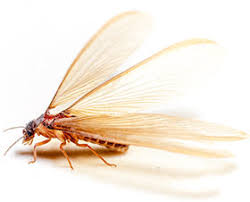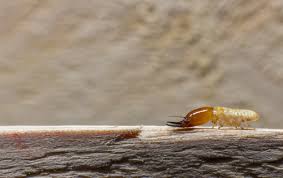
The Only Guide for Termite Control Quotation
Schedorhinotermes intermedius is your 2nd most crucial termite economically in many regions of Australia, according to ABIS. Employees build a plaster-like coating above their areas to protect themselves from the environment, contrary to other termite species which tunnel inside the wood to feed.
Schedorhinotermes intermedius occurs in coastal areas from SE Queensland. There Are Lots of closely related species that occur in different areas of Australia: S. actuosus, S. breinli, S. derosus, S. seclusus, S. reticulatus (Watch the Pa DIL Australian Biosecurity site for more details)
Fumigatus reside on decayed wood, nesting in the floor and also in tiny colonies. They feed on timber that is weathered and moist, like decking planks on verandas around the exterior of homes. They don't attack structural timber that is sound in states.
The soldiers are smaller than the employees, with a body up to 4mm long. The head is pale orange and nasute (pointed snout).
The Best Guide To Termite Control Products Bunning's
Walkeri feeds on on decayed and Engineered hardwood wood in conditions or connected with the ground. It nests with tunnels linking to the ground where there's decay or fire damage and also assembles nests high up in fire-damaged trees, in origin crowns. Subterranean tunnels radiate out from the tree. .
Soldiers are smaller compared to workers. Their body length is 5-7mm, the biggest of those Nasutitermes species. The mind is orange and nasute (pointed snout).
Walker happens from coastal areas and the basin in New South Wales and Queensland.
ENTFACT-60 4: Termite Control: Answers for Homeowners   Download PDF  from Michael F. Potter, Extension Entomologist University of Kentucky College of Agriculture The University of Kentuckys Entomology Department receives several calls regarding termites. Subterranean (soil-dwelling) termites are severe pests of buildings and usually warrant attention by an expert. Control could be confusing and homeowners frequently have many questions.
Fascination About Termite Control Products Bunning's
NOTE: Answers provided in this novel are based on conditions in Kentucky, with value throughout much of the USA. However, termites and treatments sometimes vary with locale, which means you may also need to consult with your local cooperative extension support about recommendations for your area. Q: Why stress about termites A: Termites cause billions of dollars in damage every year in the U.S.
Termites can injure shrubs and trees, but more often are a secondary invader of plants in decline. While termites may infest buildings they are especially important when buying or selling a house is generally a condition of sale. Besides the monetary impact, tens of thousands of termites emerging inside one's home are an emotionally trying experience not to mention my website that the thought of termites quietly feasting on the largest professional and experienced expert investment of one.
1: Termites are effective at resisting costly harm.  Q: Why are infestations often discovered at the spring A: Spring typically is when large numbers of winged termites, known as"swarmers," emerge indoors homes. Basically, termites swarm to distribute and begin new colonies. Triggered by warmer temperatures and rain, the winged termites emerge in the colony and then fly in the atmosphere.

Fascination About Termite Control Quotation
Winged termites frequently confuse with rodents, which are inclined to swarm at the same time of year. Termites have a uniformly waist, straight antennae, and wings of equal dimensions. Ants have elbowed antennae, constricted waists, and forewings that are longer than the hind wings. Fig. 3:Â Termite swarmers are often confused with winged ants.
Out aren't necessarily cause for concern, and do not indicate the house is infested. On the other hand, if swarmers are emerging alongside the base or from abutting porches or patios, there is a good chance the house is infested also. Other signs of infestation are earthen subway tubes extending over base walls, support piers, sill plates, floor joists, etc..
As they travel between the structure and their subterranean colonies termites construct the tubes for refuge. The tubes may be broken open and assessed for the existence of small worker termites, to help determine if an infestation is active. It doesn't automatically signify that the infestation is dormant, if a tube happens to be vacant; whilst foraging elsewhere in the construction, termites abandon sections of tubing.